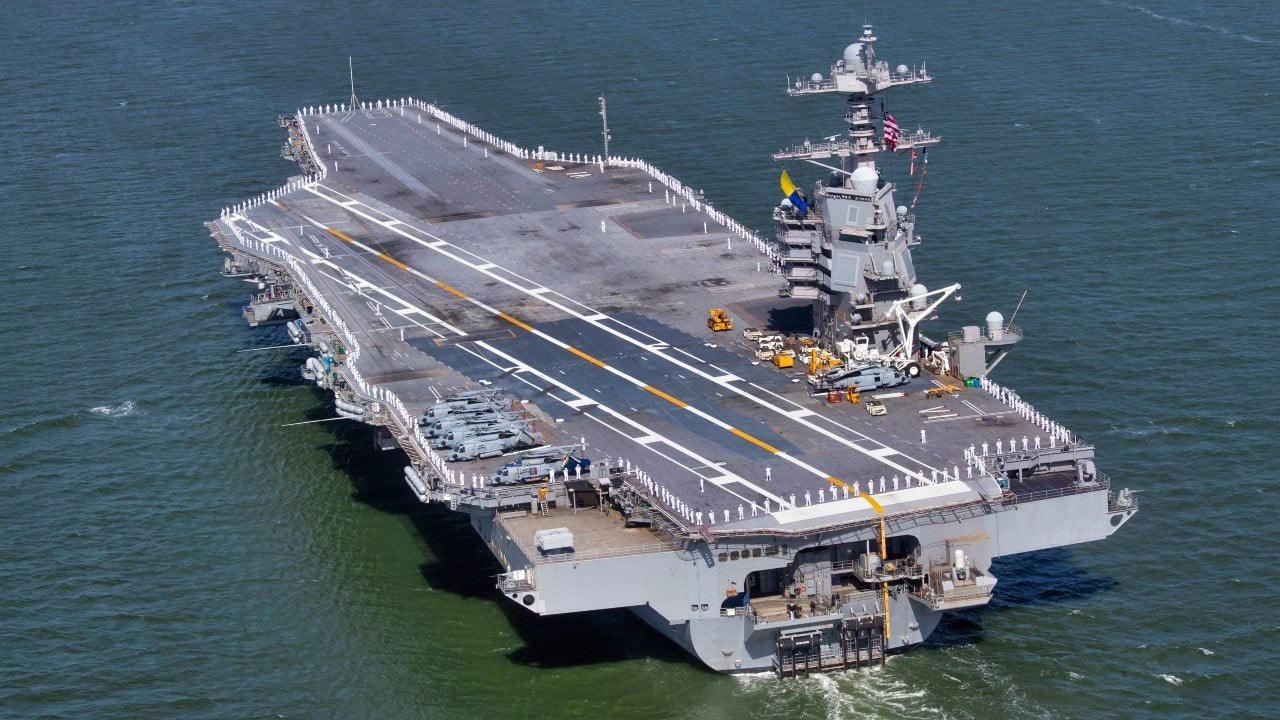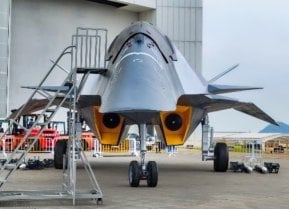The U.S. Navy's Ford-Class Aircraft Carrier Nightmare Explained in 3 Words
The article discusses the U.S. Navy's Gerald R. Ford-class nuclear-powered aircraft carriers, developed to replace the aging Nimitz-class vessels. Despite being the most expensive warships ever built at $13.3 billion each, these carriers face significant challenges.
Stop Building Them: The article discusses the U.S. Navy's Gerald R. Ford-class nuclear-powered aircraft carriers, developed to replace the aging Nimitz-class vessels. Despite being the most expensive warships ever built at $13.3 billion each, these carriers face significant challenges.

-Advanced technologies intended to enhance their combat effectiveness have led to increased costs and deployment delays, with some systems not performing as expected.
-The article argues that these carriers are vulnerable to modern anti-access/area-denial (A2/AD) systems deployed by countries like China, which can threaten these expensive assets with cheaper weaponry. As a result, the Navy's investment may not provide the strategic advantage intended, potentially making the carriers large, easy targets in modern warfare.
Are the Navy's New $13.3 Billion Carriers Already Obsolete?
The Gerald R. Ford-class nuclear-powered aircraft carrier came about because the U.S.Navy believed it needed a replacement for its enduring Nimitz-class carriers. There are currently 10 of the aging nuclear-powered Nimitz-class vessels.
The Navy is stuck in a strategic rut. The maritime branch seems to think it is still 1996, and that U.S. carriers can travel unmolested and dominate any distant target the Navy desires.
That is not the case.
The advent of anti-access/area-denial (A2/AD) systems complicates the old American view of carriers as the ultimate – and easiest – form of power projection.
The Specs on the Ford-Class
When the Navy was seeking to build a new carrier class, they wanted to catapult carrier designs and capabilities into the next half-century. American planners envisioned a carrier so advanced no other power, notably a rising near-peer power such as China, would ever challenge the might of the U.S. Navy at sea.
Every advanced system imaginable was thrown into the construction of this boat. Thus, the Gerald R. Ford class costs the taxpayer an astonishing $13.3 billion per ship. (That number is supposed to decrease over time.) It is the most expensive warship ever made.

The Gerald R. Ford class is the largest warship ever built, too.
Built by Huntington Ingalls Industries Newport News Shipbuilding, the USS Gerald R. Ford has two A1B nuclear reactors and is armed with Evolved Sea Sparrow missiles, Rolling Airframe Missiles, and the Close-In Weapons System.
Its air wing comprises 75 aircraft, and the warship itself carries a combined crew of 4,539 souls (the ship crew, airwing, and staff). Interestingly, the new boats are designed to be operated by 700 fewer crew than the Nimitz-class aircraft carriers. Automation is a big deal, and the airwing on this boat is also designed to operate with 400 fewer personnel.
The first vessel was ordered by the government on Sept. 10, 2008. It was scheduled for delivery eight years later, but because of all the new technologies involved, it could not be deployed on time.
The Navy claims that the new carrier delivers 20% more lethality than existing platforms. Designers of the CVN-21 Program argue that the warship has greater interoperability across the other U.S. services, as well as with friendly navies, enhancing lethality and cost-sharing on deployments
The advanced technologies skyrocketed the cost, and these systems also complicated the development and deployment of the boats. Expensive systems meant to make the carrier more lethal in combat and more effective when at sea have not operated as advertised. This is one reason why the USS Gerald R. Ford, the first warship of the class, was significantly delayed in its planned deployment.
Not the Right War for Aircraft Carriers
Even if the technology onboard the great warship worked exactly as it was supposed to on day one, the cost of the warship itself is a liability. That’s because the A2/AD systems that China has deployed throughout the South China Sea and along its coastline are infinitely cheaper than what the carriers cost.
What’s more, as a sailor who has spent his career on aircraft carriers remarked to me: No matter how awesome the new carrier class may be, no ship can repel every attack.
In other words, no matter its own lethality, if this $13.3 billion monstrosity gets too close to those A2/AD systems, it will be destroyed or severely damaged.
The Navy knew this going into the design and production of the Gerald R. Ford.

Yet, like trying to turn a speeding aircraft carrier on a dime, trying to get the acquisitions office for the Navy to make adjustments to their carefully laid plans was nearly impossible. The bureaucracy didn’t even try.
The Navy intends for the Gerald R. Ford class to have a 50-year service life. So, as the Nimitz class is decommissioned over the next decade, the Navy may have just invested in a giant boondoggle that is a large, easy target for China’s A2/AD systems.
This carrier was designed to fight yesterday's wars with tomorrow’s technologies.
It does not represent the quantum leap that its proponents argue, although it does come with a price tag worthy of the idea. It is the equivalent of a sunk cost, both figuratively and metaphorically, as it could be destroyed by systems that are far less advanced and cheaper.
About the Author
Brandon J. Weichert, a National Interest national security analyst, is a former Congressional staffer and geopolitical analyst who is a contributor at The Washington Times, the Asia Times, and The-Pipeline. He is the author of Winning Space: How America Remains a Superpower, Biohacked: China’s Race to Control Life, and The Shadow War: Iran’s Quest for Supremacy. His next book, A Disaster of Our Own Making: How the West Lost Ukraine, is out now from Encounter Books. Weichert can be followed via Twitter @WeTheBrandon.
Image Credit: Creative Commons and/or Shutterstock.


